What Landowners Need to Know: the Endangered Species Act in Texas
Introduction
The Endangered Species Act of 1973 (ESA) is a critical piece of legislation related to the conservation of threatened and endangered species and their ecosystems. This lesson provides historical context, a step-by-step look at the listing process, details on how this legislation impacts private landowners, and resources and opportunities for Texans.
This interactive publication was created by the Texas A&M Natural Resources Institute in collaboration with the Texas Wildlife Association. Each photo throughout the publication features a species that is threatened, endangered, or in decline in the state of Texas.
Background, History, and Purpose of the Endangered Species Act
Endangered Species Preservation Act of 1966 and the Convention on International Trade in Endangered Species
In the United States, wildlife populations were declining rapidly in the 20th century from overexploitation and habitat destruction and the U.S. government attempted to solve this massive problem partially through legislation. Starting with the passage of the Endangered Species Preservation Act (ESPA) in 1966, Congress began establishing protections for endangered fish and wildlife species. This Act was brought about due to concerns about diminishing whooping crane (Grus americana) numbers and tasked the Department of Interior (DOI) with carrying out programs to conserve and restore certain native species in danger of extinction. Unfortunately, the ESPA was far from thorough and did not list many species of concern or prevent the general public from “taking” them and destroying their habitat.
Further conservation efforts were made with the Convention on International Trade in Endangered Species of Wild Fauna and Flora (CITES), which was signed in March 1973 and aims to regulate international trade of endangered plant and animal species. Although this was a massive success for preventing the harmful use and trade of endangered species internationally, improved domestic regulation was still needed that not only protected the exploitation of plant and animal species, but preserved their habitats and ecosystems as well.


Photo: Northern aplomado falcon (C. Watts)
The Endangered Species Act of 1973
Later in 1973, the Endangered Species Act (ESA) was made law by President Nixon after it passed in the Senate unanimously and by a vote of 355-4 in the House of Representatives. The primary purpose of the ESA was to “protect and recover imperiled species and the ecosystems upon which they depend,” and was a marked improvement upon the existing regulations of the ESPA. This new legislation defined the terms “threatened” and “endangered,” extended listing eligibility to plants and invertebrates, applied prohibitions on the “take” of these species, prohibited the federal government from jeopardizing any listed species or its habitat, and created various funding authorizations.
Key Definitions
Endangered Species: Any species which is in danger of extinction throughout all or a significant portion of its range other than a species of the Class Insecta determined by the Secretary to constitute a pest whose protection under the provisions of this Act would present an overwhelming and overriding risk to man.
Threatened Species: Any species which is likely to become an endangered species within the foreseeable future throughout all or a significant portion of its range.
Take: To harass, harm, pursue, hunt, shoot, wound, kill, trap, capture, or collect, or to attempt to engage in any such conduct.
Incidental Take: Take that results unintentionally while carrying out an otherwise legal activity.
Candidate Species: Candidate species are plants and animals for which USFWS has sufficient information on their biological status and threats to propose them as endangered or threatened under the ESA, but for which development of a proposed listing regulation is delayed due to other higher priority listings.
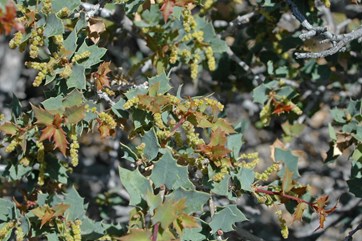
Photo: Hinckley oak (Mark W. Lockwood)
In the 1973 text of the ESA, Congress declared: ". . . [threatened and endangered] species of fish, wildlife, and plants are of esthetic, ecological, educational, historical, recreational, and scientific value to the Nation and its people."
Primary Purpose
The primary purpose of the ESA is the recovery of threatened and endangered species and the conservation of the ecosystems on which their survival is contingent.
How is it accomplished?
The ESA is a means to create programs and initiatives that encourage or require certain conservation actions by landowners and federal agencies. Much of the work of conservation is carried out by those who manage the lands that make up endangered species habitats. This legislation also provides a legal basis for the protection of threatened and endangered species and ensures that all related laws, treaties, and conventions are followed properly.
Without the work of landowners, conservation of threatened and endangered species under the ESA would not be possible. Continue navigating through this interactive publication to learn more about the opportunities landowners have to get involved in the process.
Process for Listing Species
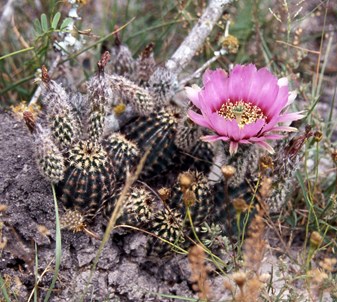
Photo: Black lace cactus (Dana Price)
According to USFWS, a species is listed when they are determined to be threatened or endangered due to any of these factors:
- The present or threatened destruction, modification, or curtailment of its habitat or range;
- over-utilization for commercial, recreational, scientific, or educational purposes;
- disease or predation;
- the inadequacy of existing regulatory mechanisms;
- other natural or manmade factors affecting its survival.
Listing Process
The process for listing species is often long and complicated and may seem daunting to individuals unfamiliar with the terminology. Continue reading to learn about each step in the process and where citizens can get involved.
Petition Received:
Petitions to list a species under the ESA can be submitted by any organization, government agency, or individual who believes there is sufficient evidence that a species should be listed. Written petitions must be submitted either electronically or by mail. The USFWS document below contains specific instructions and guidelines to consider when composing a petition for either listing a species, reclassifying a species that is already listed, or revising a critical habitat designation. See the USFWS document below for more information on submitting petitions under the ESA.
- Attachment: Public Advisory Information to Consider When Submitting a Petition Under the Endangered Species Act
All petitions received by USFWS can be found here and active National Marine Fisheries Service (NMFS) petitions for marine species here.
90-day Review:
After a petition is received by USFWS or the National Marine Fisheries Service (NMFS), it undergoes a 90-day review to determine if there is substantial information about a candidate species to determine its status as threatened or endangered. The 90-day finding can be either positive or negative.
- If the findings are negative, meaning that there is not substantial scientific evidence to determine that a species should be listed, the petition is denied and the process ends. A species can be petitioned for listing multiple times, but will not usually be reviewed again if there is not additional scientific and commercial information provided that indicates listing should occur.
- If the findings are positive, meaning that there is substantial information to determine if listing is warranted, the petition moves forward to the next step in the process.
Status Review and Public Comments:
A positive 90-day finding marks the beginning of the species status review. This involves the collection of all relevant scientific and commercial data to evaluate the species' current population status and risk of extinction.
At this time, the petition and status review are made available to the public. This means that anyone can submit information, either scientific or commercial, that they believe to be relevant to the listing process. Comments can be made through the Federal Register.
12-month Finding:
After the status review is completed, the reviewing agency must publish their findings. This is called the "12-month finding" because it must be published within one year from the date the petition was received. One of three possible findings will be published:
- Not Warranted: The petitioned action is not warranted and no further action is taken.
- Warranted: The petitioned action is warranted and the reviewing agency moves onto the next step in the process.
- Warranted-but-Precluded: The petitioned action is indeed warranted, but precedence is given to other, higher-priority species that have been petitioned for listing or status change. Petitions with this finding are resubmitted on the date of the finding, and the petitions for these candidate species will undergo the process of a 12-month finding every year until the action is found to be either not warranted or warranted.
Proposed Rule Published:
When the 12-month finding is warranted, the results of the finding, any related information, and the proposed listing ruling are published in the Federal Register. After the proposed ruling is published, a 60 day comment period is held. During this time, species specialists and independent experts are invited to peer review the proposed ruling and provide feedback. Public comments are also requested from individuals, scientific communities, and state and federal agencies.
Final Rule Published:
Any additional data and relevant information received during the comment period is considered when making a final decision on whether or not to list a species. If the reviewing agency does not believe there is sufficient scientific evidence to justify listing, the proposal will be withdrawn and no further action is taken. If it is determined that there is sufficient evidence to support listing, a final rule is published in the Federal Register announcing the species listing (effective 30 days after the announcement).
Landowner Responsibilities and Opportunities

Photo: Ocelot (Martinus Scriblerus)
Once a species is officially listed as threatened or endangered under the ESA, regulations and protections go into place for that species. On the whole, this will likely not change everyday activities for many private landowners. However, under the ESA landowners may not:
- Harass or kill any threatened or endangered species
- This is defined as "take," which includes "to harass, harm, pursue, hunt, shoot, wound, kill, trap, capture, or collect, or attempt to engage in any such conduct."
- Destroy or disturb the habitat of a listed species
- "Harm," as used in the definition of "take," includes damage or degradation to habitat used by the species during any part of its life cycle.
Modifications have been made to the ESA since the 1970’s to allow certain exceptions to the above rule in an attempt to encourage landowner participation in the undertaking of species conservation without causing excessive hardships or potential liabilities. We will discuss these later on.
One point of contention for landowners is often the "critical habitat" designation.
Critical Habitat
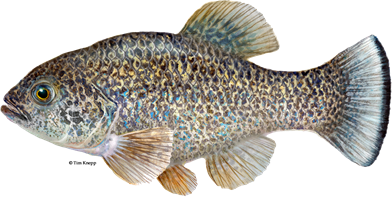
Photo: Comanche Springs pupfish (Tim Knepp)
The U.S. Congressional definition of critical habitat is as follows:
" . . the specific areas within the geographical area occupied by the species. . . on which are found those physical or biological features essential to the conservation of the species and which may require special management considerations or protection."
USFWS makes the final decision on if an existing habitat is critical to a species’ conservation and specifically where the habitat is found. Some landowners might mistakenly believe that this will impact them or require further regulation on their property. However, as long as a landowner is not using federal funding or authorization, their management actions and everyday activities will not be significantly impacted. This does not mean that landowners who don't receive federal funding are allowed to destroy valuable habitat, but this designation is used more for federal agencies and their habitat management consultation processes.
Link: Map of All Critical Habitat Designations in the U.S.
Landowner Opportunities
When a species is proposed for listing under the ESA, landowners will have multiple opportunities to become involved in the process, either by providing information or voluntarily participating in the preservation of the candidate species. Various tools and programs are also available to aid and inform landowners after a species is officially listed.
Continue scrolling to learn about the programs available at each stage of ESA listing.

Photo: Southwestern willow flycatcher (NRCS)
Before ESA Listing
These programs are aimed at conserving species before they are listed, hopefully precluding the need to list them.
- Candidate Conservation Agreements (CCA)
- Primary Goal: Conserve candidate species to prevent them from becoming listed under the ESA
- Participants: USFWS, any other interested parties (landowners, states, federal agencies, etc.)
- The Basics: Participants agree to implement conservation management techniques aimed at protecting a particular candidate species and removing threats that may cause it to be listed as threatened or endangered. This is a voluntary agreement which does not offer any assurances or protections to participating entities if the species is eventually listed.
- Candidate Conservation Agreements with Assurances (CCAA)
- Primary Goal: Conserve candidate species to prevent them from becoming listed under the ESA
- Participants: USFWS, private non-governmental landowners
- The Basics: Landowners develop and implement conservation management plans aimed at protecting a particular candidate species and, in return, receive:
- An Enhancement of Survival Permit which authorizes a certain level of incidental take of the species in question without landowner liability.
- Assurances that if the candidate species is eventually listed the participant will not be required to take any additional conservation actions.
- Partners for Fish and Wildlife Program
- Primary Goal: Provide technical and financial assistance to landowners interested in restoring and enhancing wildlife habitat.
- Participants: USFWS National Wildlife Refuge System, all private landowners interested in restoring wildlife habitat on their land
- The Basics: Landowners can voluntarily participate in the program to restore and enhance wildlife habitat on their private, working lands. Each management project is custom-designed for individual landowners and their land needs. Priority is given to projects that are most likely to provide habitat for federal trust species, like migratory birds and T&E species.
After ESA Listing
These programs provide regulatory assurances for landowners to allow land use flexibility once a species is listed.
- Habitat Conservation Plans (HCP)
- Primary Goal: Issue incidental take permits for landowners who wish to develop the habitat of a listed species while mitigating the negative impacts for the species
- Participants: USFWS, private landowners
- The Basics: Landowners who own property where a listed species is found may still be able to develop said property legally with a HCP and incidental take permit. A HCP requires an assessment of the development’s impacts on the species, steps to avoid these impacts, funding availability and sources, and an explanation of why alternative actions were not pursued. After the creation of the HCP, the landowner receives an incidental take permit and is no longer liable for the take of a listed species that occurs through approved development activities.
- Conservation Banks (CB)
- Primary Goal: Offset the loss of the habitat of a listed species by permanently protecting habitat elsewhere
- Participants: USFWS, private landowners
- The Basics: After entering into a conservation bank agreement, a private landowner will receive mitigation credits for protecting and managing their land for at least one ESA listed species. These credits may be sold to other landowners who need to mitigate the harmful effects of their land use on listed species and their habitat.
- Safe Harbor Agreements (SHA)
- Primary Goal: Provide protections for landowners who wish to voluntarily improve and/or protect the habitat of a listed species
- Participants: USFWS, private landowners
- The Basics: Landowners who voluntarily choose to improve and/or protect the habitat of a listed species will receive assurances from USFWS that no land-use restrictions will be imposed on their property even if conditions change. Under this agreement, landowners receive an Enhancement of Survival Permit which authorizes incidental takes that occur under this agreement. Although the property must be managed for the duration of time agreed upon, the property may return to its baseline conditions at the end of the agreement.
- Recovery Implementation Programs
- Primary Goal: Balance endangered species recovery with the use of natural resources
- Participants: Many stakeholders, usually involving federal agencies
Threatened and Endangered Species Spotlight
Every threatened and endangered species is ecologically valuable, but will have varying impacts on Texas landowners depending on their unique geography, biology, ecological impact, or cultural significance. Continue scrolling to learn more about these key species in Texas that are either threatened, endangered, or actively being considered for listing:
- Red-cockaded woodpecker
- Freshwater mussels
- Golden-cheeked warbler
- Navasota ladies’-tresses
- Spot-tailed earless lizard
- Whooping crane
Red-cockaded woodpecker (Dryobates borealis)
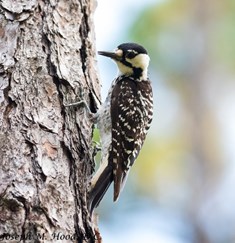
Photo: Red-cockaded woodpecker (Joseph Hood)
Red-cockaded woodpeckers are an endangered species found in mature pine forests in the Southeast United States. Conservation efforts for this species often center around habitat restoration of the longleaf pine ecosystem, prescribed fires, and provision of artificial nesting cavities.
Species Background
- ECOS Species Profile
- "Red-cockaded Woodpecker nesting season meets climate change"
- Species Overview (Audubon)
- Species Overview (USFWS)
Management Plans and Resources
- Red-cockaded Woodpecker Artificial Nest Cavity Demonstration (Video)
- Red-cockaded Woodpecker Recovery
- Texas Longleaf Implementation Team
View a range map of the red-cockaded woodpecker here.
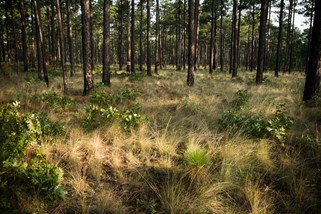
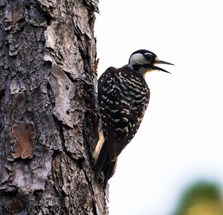
Photos: Red-cockaded woodpecker habitat (Justin Meissen), red-cockaded woodpecker (Joseph Hood)
Freshwater Mussels
Freshwater mussels perform vital ecosystem maintenance through nutrient-cycling, stabilizing stream-bed substrates, and increasing habitat diversity. Fifteen species are considered threatened on the state level in Texas, and of these, 12 are under review for federal listing under the ESA. One species, the Texas Hornshell (Popenaias popeii) is listed as federally endangered.

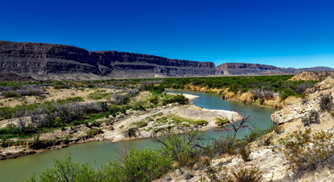
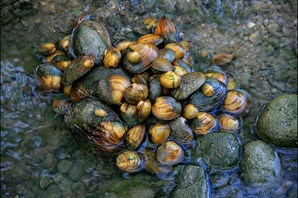
Photos: Golden orb mussel (USFWS), riparian habitat in western Texas, pile of freshwater mussels (Charles Randklev)
Species Background
- All About Freshwater Mussels U.S. Fish & Wildlife Service (Video)
- Five Texas Mussel Species
- Mussels of Texas
- Texas Freshwater Mussel Biology
Research and Conservation Information
- Freshwater Mussel Research (Video)
- NRI Freshwater Mussel Research Home Page
- Texas Freshwater Mussels of Conservation Concern
- Texas Nature Trackers: Texas Mussel Watch
The article below was published in the June 2021 issue of Texas Wildlife magazine, a publication of the Texas Wildlife Association. It is reprinted here with permission from TWA.
Attachment: Conserving Freshwater Mussels, the Unsung Heroes of Texas Rivers by Aubry Buzek
Click through the lesson below to learn more about a handful of Texas freshwater mussel species and their overall cultural and ecological importance.
Link: All About Texas Mussels
Golden-cheeked Warbler (Setophaga chrysoparia)
The golden-cheeked warbler is a charismatic, endangered songbird that only nests in the juniper-oak woodlands of central Texas. This specialized nesting habitat has been depleted by urban sprawl and habitat loss and fragmentation.
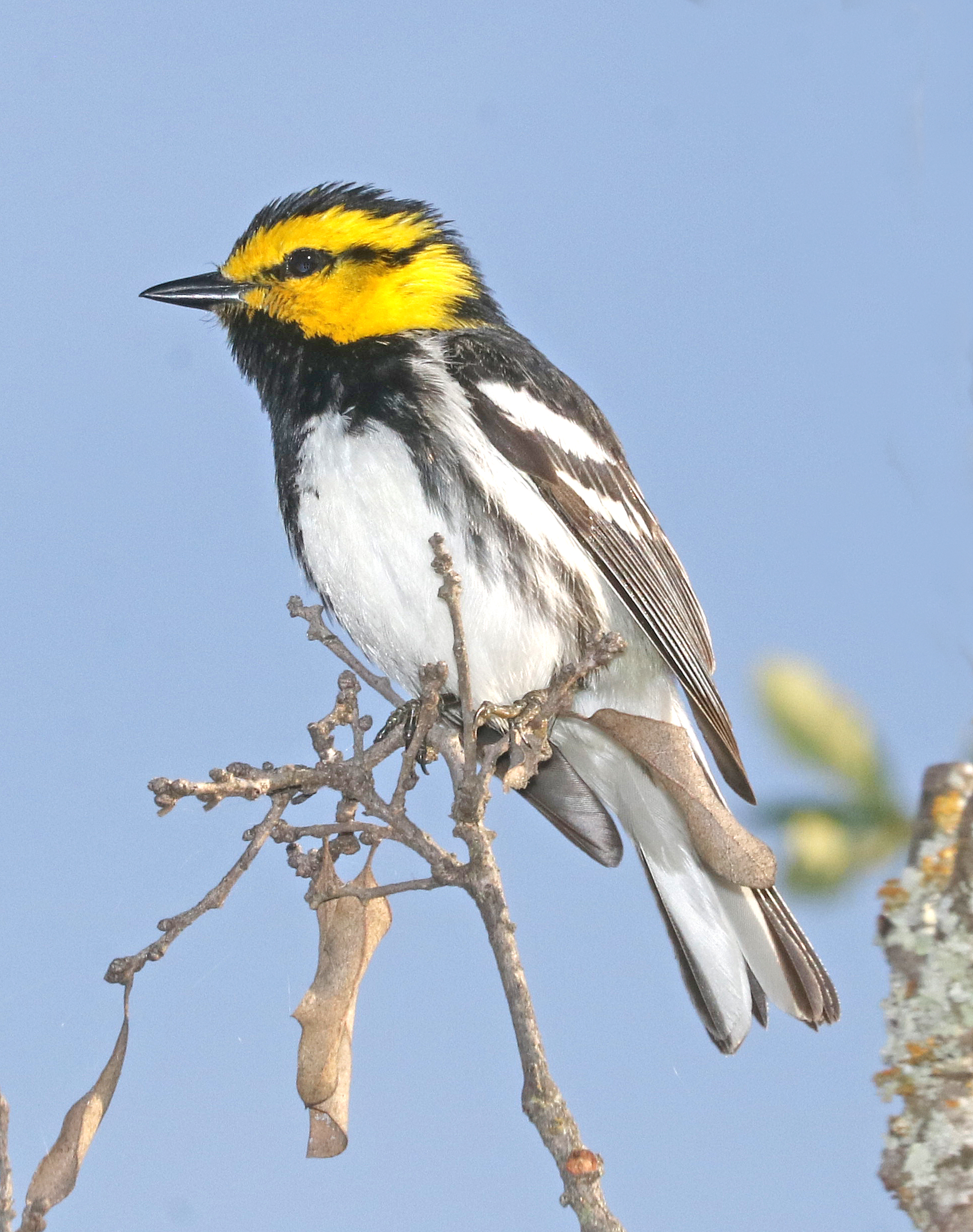
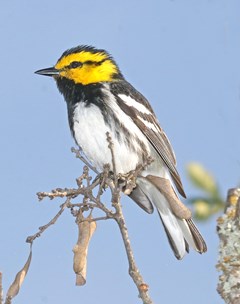
Photo: Golden-cheeked warbler (Alan Schmierer)
Species Background
- ECOS Species Profile
- GCW Overview (Audubon)
- GCW Overview (All About Birds)
- Golden-cheeked Warbler: a True Native Texan (Story-Map)
Management Plans and Resources
- Management Plan Outline (USFWS)
- Guidelines for the Establishment, Management, and Operations of GCW and Black-capped Vireo Mitigation Lands
- Management Guidelines for GCWs in Rural Landscapes (TPWD)
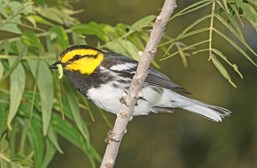
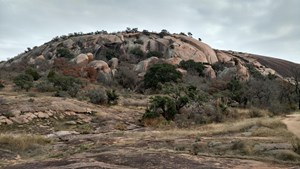



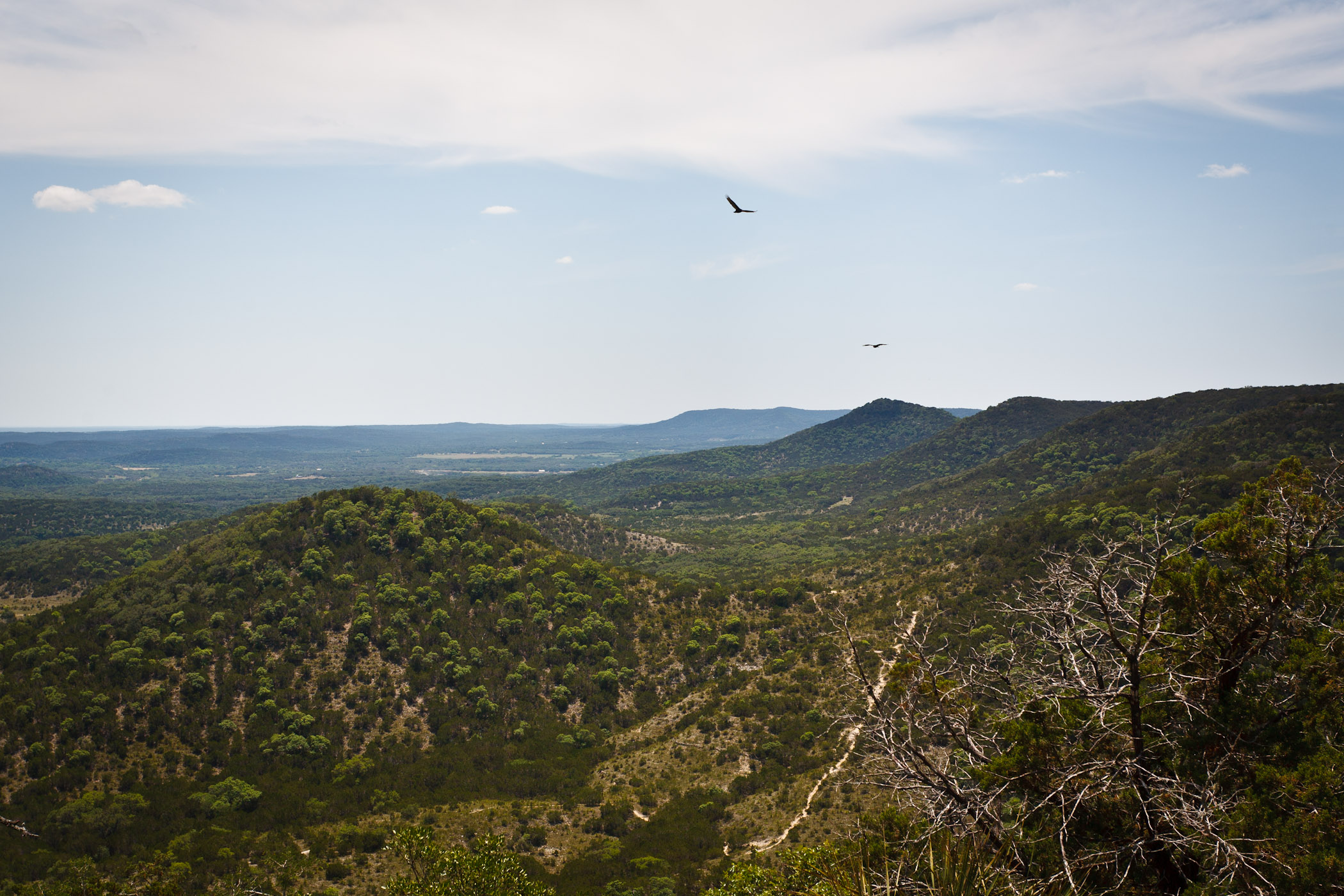
Photos: Golden-cheeked warbler (Alan Schmierer), Enchanted Rock (Shelby McCay), golden-cheeked warbler (John Mangold), and Texas Hill Country (Matthew Peoples)
View a range map of the golden-cheeked warbler here.
Navasota Ladies’-tresses (Spiranthes parskii)
Navasota ladies'-tresses is an endangered species of orchid found in the post oak savannahs of only a handful of counties in Texas. Its habitat has been threatened by fragmentation and fire suppression.
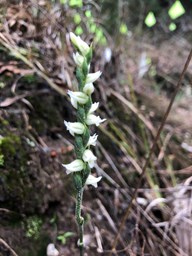
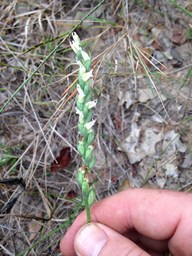
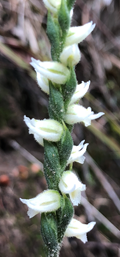
Photos: Navasota ladies’-tresses (Andy James)
Species Background
Attachment: Biology, Ecology, and Conservation of Navasota Ladies’ Tresses from the publication “Native Plants”
Spot-tailed Earless Lizard (Holbrookia lacerata)
The listing status of the spot-tailed earless lizard is currently under review, but it is considered to be declining across its range. Research is currently underway to learn more about the biology, habitat requirements, population density, and activity patterns. This research will assist the listing decision-making process by providing the most up-to-date scientific data available.
Species Background
Research and Conservation Information
- Conservation Assessment and Population Connectivity for Spot-tailed Earless Lizard (Program)
- Spot-tailed Earless Lizard: New Research to Improve Lizard Surveys (Video)
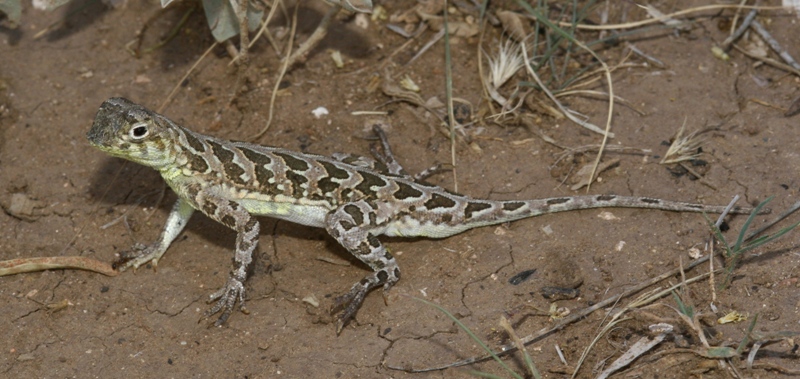
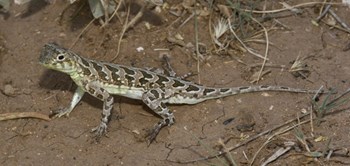
Photo: Spot-tailed earless lizard (Terry Hibbitts)
Whooping Crane (Grus americana)
Whooping cranes are listed as endangered and have been the subject of massive conservation efforts for many decades. Through these efforts there has been an increase in numbers, but only one self-sustaining population remains in the wild and migrates annually between Canada's Wood Buffalo National Park and Texas's Aransas National Wildlife Refuge.
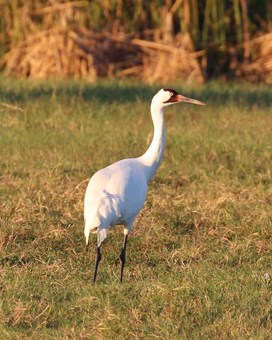
Photo: Whooping crane (Tom Benson)
Species Background
- ECOS Species Profile
- Whooping Crane Overview (Audubon)
- Whooping Crane Overview (All About Birds)
- Wintering Whooping Cranes – Texas Parks and Wildlife (Video)
Research and Conservation Information
- International Whooping Crane Recovery Plan
- Is It a Whooping Crane?
- “Private Lands Important to Whooping Cranes Wintering on Texas Coast”
- Texas Whooper Watch
- Whooping Cranes, On the Right Track – Texas Parks and Wildlife (Video)
- Whooping Cranes on the Texas Coast – An Important Key to Their Recovery (Video)
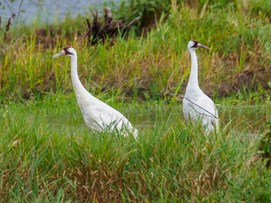
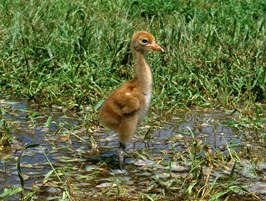
Photos: Two whooping cranes (Michael Janke), whooping crane chick (International Crane Foundation)
View a range map of the whooping crane here.
Other Species of Interest in Texas
View the attached pdf and photos below to see a few more species of interest that may need help from landowners to thrive in Texas.
Attachment: Other Species of Interest for Texas Landowners

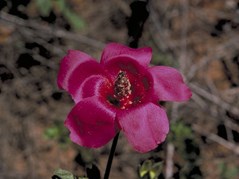




Photos: Ashy dogweed (Anna Strong), Texas poppy-mallow (W.D. and Dolphia Bransford via Lady Bird Johnson Wildflower Center), star cactus (Sandy Birnbaum), Texas snowbells (Jackie Poole), Houston toad (John Williams), Texas kangaroo rat (Curtis Hart)
Management Resources
Permits
The ESA tries to accomplish a balance between species conservation and landowner activities, but to motivate individuals and corporations to follow its rules and regulations, it makes any activities that affect threatened and endangered plants and animals or their habitat (aka “take”) illegal. Exceptions can be made for certain activities that are accompanied with the proper permits. Endangered species permits can be acquired for one of three reasons:
- Incidental take
- Enhancement of propagation or survival
- Scientific research
Click through the markers below to learn more about each permit type.
- Incidental Take Permits: These permits are required when private land-use activities result in the take of a threatened or endangered species. Must be accompanied by a habitat conservation plan (HCP).
- Enhancement of Survival Permits: These permits are issued to private landowners who participate in Safe Harbor Agreements (SHA) or Candidate Conservation Agreements with Assurances (CCAA).
- Recovery and Interstate Commerce Permits: These permits are issued to protect activities which are intended to aid the recovery of a listed species but may require some take (e.g. scientific research purposes, or breeding programs that require sale and transportation of a species across state lines).
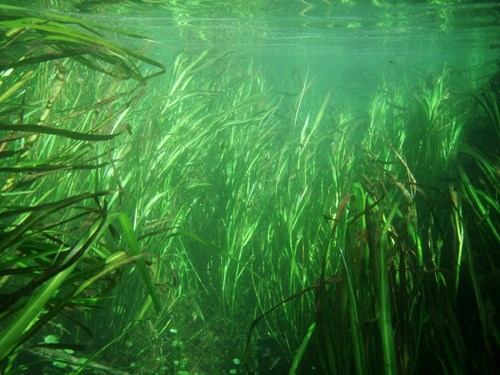
Photo: Texas wild-rice (John Thomaides)
Applicants must pay a processing fee when they either apply for a new permit or amend an existing one. Take a look at the link below to learn more about the different types of permits available and the process for acquiring a permit.
Link: FWS Permits
What happens if you unintentionally “take” a species without an incidental take permit?
Any person who knowingly violates the terms of the ESA by possessing, taking, selling, or otherwise harming listed species can face civil penalties of up to $25,000 per violation and criminal penalties up to $50,000 or a year in prison for each violation. These penalties do not apply to anyone who can prove that they committed the violation based on a good-faith belief that they were protecting themselves or another person from harm caused by a threatened or endangered species. A person who unknowingly violates the ESA will still be subject to fines, but on a much smaller scale and without the threat of criminal prosecution.
Section 11 of the Act covers the penalties and law enforcement associated with the ESA.
Scenario: You are a new landowner from Dallas who just purchased 500 acres in the Texas Hill Country. You want to be hands-on and purchase a skid-steer to start clearing juniper off the land. After about 6 months, your neighbor informs you that you have cleared about 100 acres of valuable golden-cheeked warbler habitat. Are you in legal trouble for violating the ESA by destroying the habitat of an endangered species? Will there be repercussions?
Answer: In this situation, you did not knowingly violate the ESA, and while you may be subject to fines, they will not be as severe as those for someone who intentionally causes harm to threatened and endangered species. The best way to avoid penalty and protect endangered species is by staying informed about the rules and regulations of the ESA and what programs and permits are available to help you conserve listed species as well as the health and productivity of your land.
Additional Resources
There are many documents and resources created by federal agencies, universities, and other groups to aid in citizens' understanding of the ESA. Click through the links below to learn more.
Links: An Overview of the Endangered Species Act, ESA Basics: 40 Years of Conserving Endangered Species, Wildlife Habitat Assessment Program
Natural resource professionals are one of the best resources for private landowners who need assistance with management efforts related to the ESA. Use the interactive lesson below to learn about some of the most prominent natural resource agencies in Texas and how to contact your local professionals.
Link: How to Find Natural Resource Professionals in Texas
Links: Texas Landowners’ Guide to the Endangered Species Act, Habitat Conservation Plans: Section 10 of the Endangered Species Act, Grazing, Hunting, and Endangered Species Management Are Compatible Practices: Diversifying Your Income Through a Multi-species Approach
USFWS created an "Endangered Species Act 101" YouTube video which discusses the basics of the Act and what different processes look like in practice - watch the video below:
Link: Endangered Species Act 101
Links: Resources for New Landowners: Aldo Leopold’s Five Tools of Wildlife Management, Texas Longleaf Landscapes
Attachment: List of All Threatened and Endangered Species in Texas 3/30/20
Looking Forward
Species Delisting
A species is no longer considered threatened or endangered (aka it is “delisted”) when it meets one of a few criteria:
- “The species has recovered to the point that it no longer needs the ESA’s protection;
- The original information warranting listing has shown to be incorrect, or new information suggests that the species is not actually endangered or threatened;
- The species has become extinct."
If experts believe that a species has reached its recovery goals and no longer needs protection under the ESA, the status of that species will be assessed. This assessment will either reveal that the species needs further protection and will remain listed, or no further protections are needed and a rule will be proposed to delist or down-list the species in the Federal Register. Multiple specialists will review the rule and decide whether they are in favor of the change in species status. If they publish a rule to delist a species fully, the species will be monitored using a post-delisting monitoring (PDM) plan for 5 years at minimum. PDM is required for all species that are delisted because of population recovery and the plan is generally developed during the process of delisting so it can be implemented immediately.
What does this mean for landowners?
Landowners who actively committed to and participated in species recovery will be asked to contribute information or opinions while developing a PDM plan, and their commitment to the conservation of the species will be considered in the delisting process.
Delisted Species
To date, 97 species have been delisted under the ESA for a variety of reasons. The American alligator (Alligator mississippiensis) is one of the most well-known success stories. Population numbers plummeted through the 1950s due to habitat loss and over-hunting, but because of the ESA and its conservation efforts they were deemed fully recovered by 1987 and were subsequently delisted.
Below are a few other delisted species found in Texas.
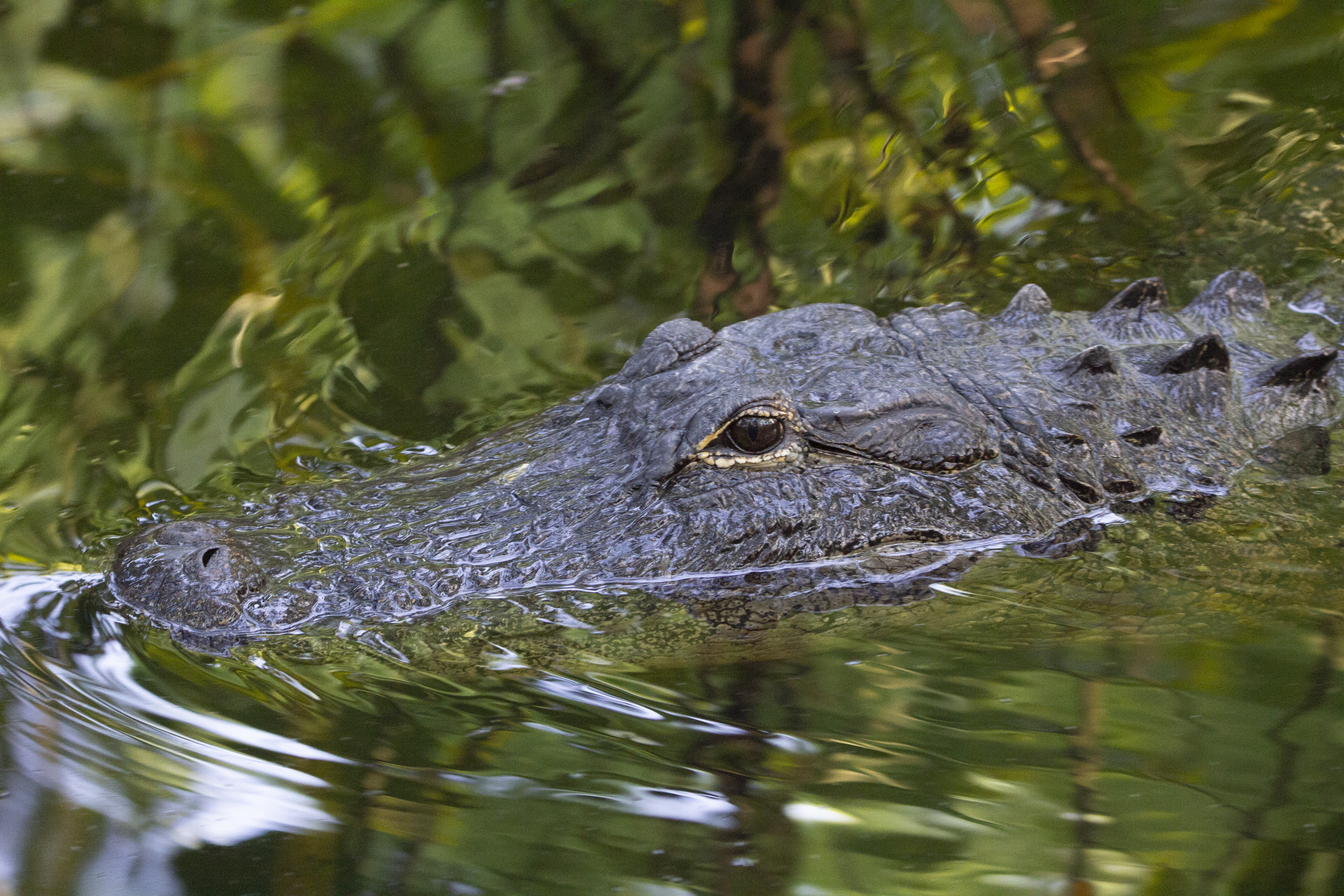
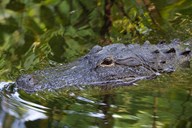


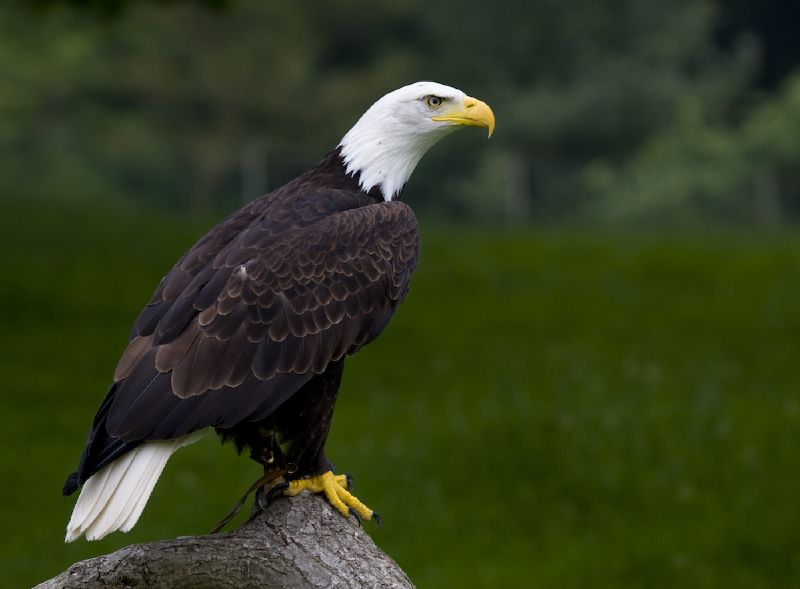

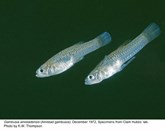


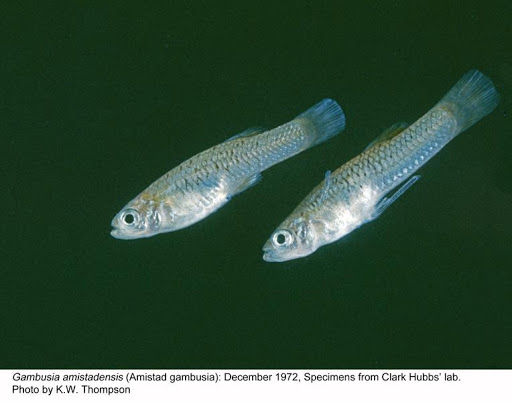
Photos: American alligator (Dennis Church), black-capped vireo (Alan Schmierer), bald eagle (Brian Scott), least tern (Martien Brand), Amistad gambusia (Ken Thompson), Concho water snake (Paul Crump)
Conclusion
Although understanding the ESA may feel intimidating to individual landowners, they do not have to face it alone. The resources shared in this interactive publication and local natural resource professionals are both excellent places to learn more about what ESA management looks like for each unique landowner and property. Organizations such as Wildlife Management Associations allow landowners to meet their neighbors and create a support network with which to share their goals, experiences, and visions for the future. These associations can host educational field days led by natural resource professionals and facilitate cooperation among landowners to manage valuable habitats on a much larger landscape scale. Creating these human connections can make landowners feel more comfortable with the Endangered Species Act by knowing what is expected of them and what their rights are as landowners, while also empowering them with the knowledge that landowners are the key to conserving endangered species in the United States and their efforts on the ground can contribute to a widespread, positive effort.
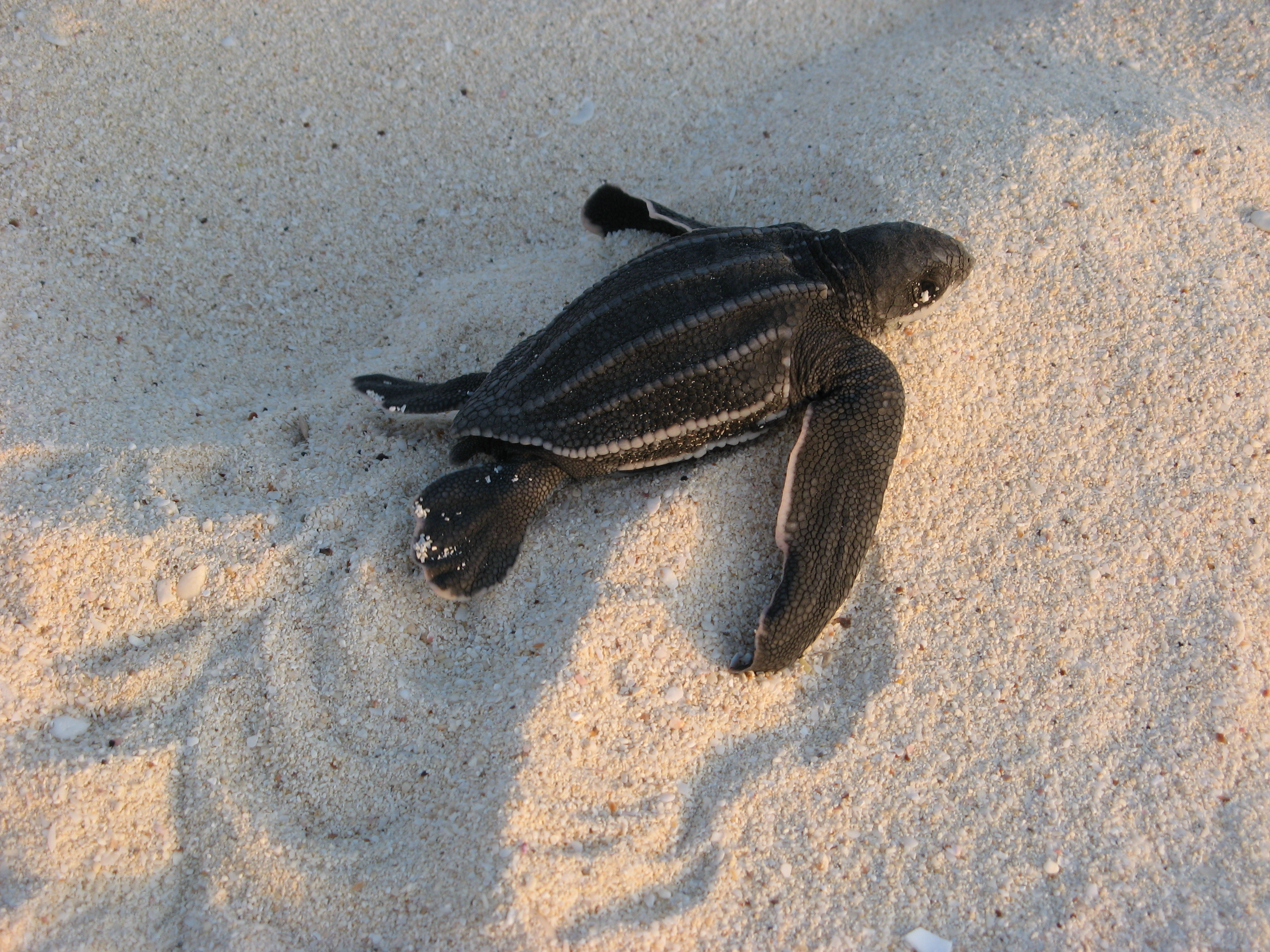

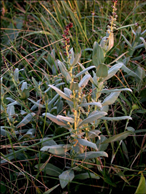


Photos: Leatherback sea turtle (Ken Clifton), South Texas ambrosia (Chris Best), Barton Springs salamander (USFWS)
Since its beginning, the ESA has improved conservation and provided a legal basis for protection of threatened and endangered species through the creation of programs and initiatives. Much of this crucial conservation work falls on landowners and can, at times, become confusing. By understanding the responsibilities required and opportunities provided when a species is listed, landowners can better learn how to manage their land to protect endangered or threatened species and the ecosystems they live in. Various tools and programs are also available to aid and inform landowners after a species is officially listed or when one is delisted.
We hope this lesson provided better insight into the Endangered Species Act and the role landowners play in carrying out conservation efforts.

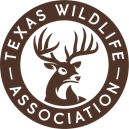
Photos: NRI logo, TWA logo
Links: Texas A&M Natural Resources Institute, Texas Wildlife Association
This interactive publication is funded by the Renewable Resources Extension Act (RREA).
Last updated: 10/1/21


